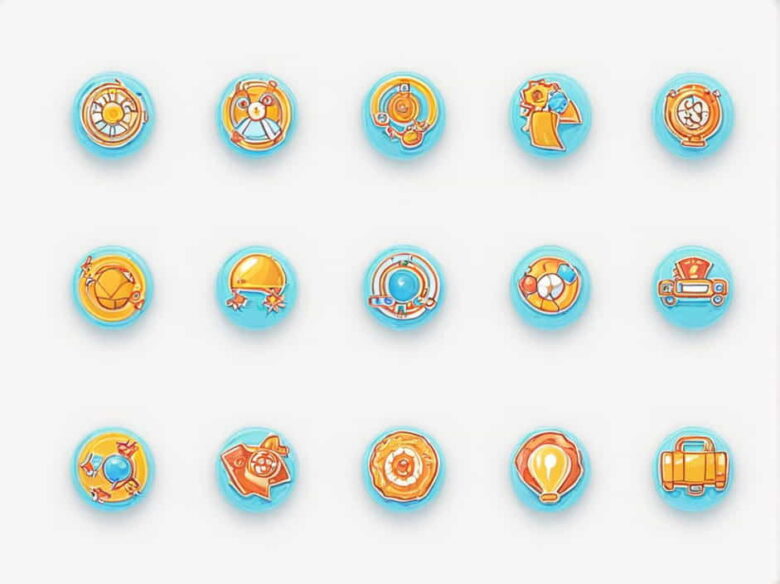Extracurricular activities play a crucial role in a childs development. At the age of five, children are full of energy, curiosity, and creativity. Engaging them in structured activities helps improve their motor skills, social abilities, and cognitive development.
Choosing the right activities for a 5-year-old can be challenging because they are still discovering their interests. The key is to find fun, engaging, and educational activities that foster their growth without overwhelming them.
This content explores the best extracurricular activities for 5-year-olds, categorized by physical, creative, cognitive, and social development.
Physical Activities
Physical activities are essential for young children as they help develop coordination, balance, and overall health. At this age, kids enjoy movement-based activities that allow them to explore their surroundings.
1. Dance Classes
Dancing helps improve balance, rhythm, and flexibility. Many studios offer classes such as:
- Ballet Enhances grace and posture.
- Hip-hop Encourages self-expression and confidence.
- Creative movement Focuses on fun and imaginative dance.
Dance is an excellent way for kids to release energy while building confidence and social skills.
2. Gymnastics
Gymnastics is ideal for developing strength, coordination, and body control. Basic classes teach:
- Tumbling
- Balance beam walking
- Simple acrobatics
This activity also enhances discipline and focus, making it beneficial for overall development.
3. Swimming Lessons
Swimming is an essential life skill that also improves:
- Muscle strength
- Lung capacity
- Water safety awareness
It is a low-impact activity that keeps kids active while building confidence and coordination.
4. Soccer or T-ball
Team sports introduce children to cooperation, teamwork, and basic game rules. Soccer and T-ball are beginner-friendly and help kids develop:
- Hand-eye coordination
- Social interaction
- Basic athletic skills
At this age, the focus should be on having fun rather than competition.
5. Martial Arts
Martial arts, such as karate or taekwondo, teach:
- Discipline
- Self-control
- Basic self-defense skills
Classes are designed for young kids, making them engaging while enhancing focus and respect for others.
Creative Activities
Encouraging creativity at an early age helps children express themselves and develop problem-solving skills. Creative activities can be both fun and educational.
6. Art Classes
Art activities stimulate imagination and fine motor skills. Kids can explore:
- Painting and drawing
- Clay modeling
- Crafting with different materials
Art also helps in expressing emotions and building patience.
7. Music Lessons
Learning an instrument or participating in group singing enhances:
- Listening skills
- Memory retention
- Hand-eye coordination
For 5-year-olds, beginner-friendly instruments include:
- Piano
- Ukulele
- Percussion instruments (like tambourines or drums)
8. Drama and Theater
Acting classes build:
- Confidence
- Communication skills
- Imaginative thinking
Through storytelling and role-playing, children learn to express themselves in a fun and interactive way.
9. Cooking for Kids
Simple cooking activities teach:
- Basic math (measuring ingredients)
- Responsibility
- Patience
Cooking also encourages healthy eating habits from a young age.
Cognitive and Educational Activities
Activities that stimulate thinking and problem-solving skills prepare children for future academic success.
10. Chess or Puzzle Games
While advanced chess strategies are too complex for young kids, simplified versions help develop:
- Critical thinking
- Patience
- Strategic planning
Puzzle games, including jigsaw puzzles or matching games, also enhance cognitive abilities.
11. Science Experiments for Kids
Simple science activities spark curiosity and encourage exploration and observation. Fun beginner-friendly experiments include:
- Making volcano eruptions with baking soda and vinegar
- Growing plants in a cup
- Color-mixing activities
12. Storytelling and Reading Clubs
Reading develops:
- Language skills
- Creativity
- Concentration
Encouraging storytelling also helps kids improve their verbal communication and confidence in sharing ideas.
13. LEGO and Building Blocks
Building activities enhance:
- Spatial awareness
- Problem-solving skills
- Creativity
LEGO and similar construction toys allow kids to explore their imagination while improving fine motor skills.
Social and Emotional Development Activities
Activities that focus on social interaction and emotional intelligence help kids develop strong relationships and understand their emotions better.
14. Playgroups and Social Clubs
Joining a playgroup encourages:
- Sharing and teamwork
- Making new friends
- Understanding emotions and empathy
Regular interaction with peers helps kids develop better social skills.
15. Animal Care and Pet Interaction
Spending time with pets teaches:
- Compassion
- Responsibility
- Empathy
For families without pets, visiting petting zoos or animal shelters can be a great experience.
16. Gardening for Kids
Gardening teaches:
- Patience
- Care for the environment
- Responsibility
Kids enjoy planting seeds, watering plants, and watching them grow, which fosters a sense of achievement.
17. Yoga and Mindfulness
Yoga helps kids develop:
- Self-awareness
- Relaxation techniques
- Better focus
Simple breathing exercises and playful yoga poses can introduce mindfulness in a fun way.
Choosing the Right Extracurricular Activity
With so many options, its important to select activities that best match a childs personality, interests, and developmental needs. Here are some tips for parents:
1. Observe Interests
Watch what excites your child. Do they love to dance, build things, or run around outside? Choosing activities based on their natural interests keeps them engaged.
2. Keep It Fun and Low-Pressure
Extracurricular activities should be enjoyable. Avoid pushing kids into activities they dont enjoy or find stressful.
3. Try Different Activities
Let your child explore multiple activities before committing to one. Many programs offer trial classes to see what fits best.
4. Balance Activity and Free Play
Structured activities are great, but children also need unstructured playtime to explore their creativity and develop independence.
5. Prioritize Social Interaction
Activities that involve other children help improve social skills and emotional intelligence.
Extracurricular activities help 5-year-olds develop physically, mentally, and emotionally while keeping them engaged and happy. The best activities are those that match a childs natural curiosity and interests, allowing them to explore new skills in a fun and supportive environment.
Whether its sports, arts, music, or cognitive games, the key is to ensure children enjoy the process while learning and growing at their own pace.



